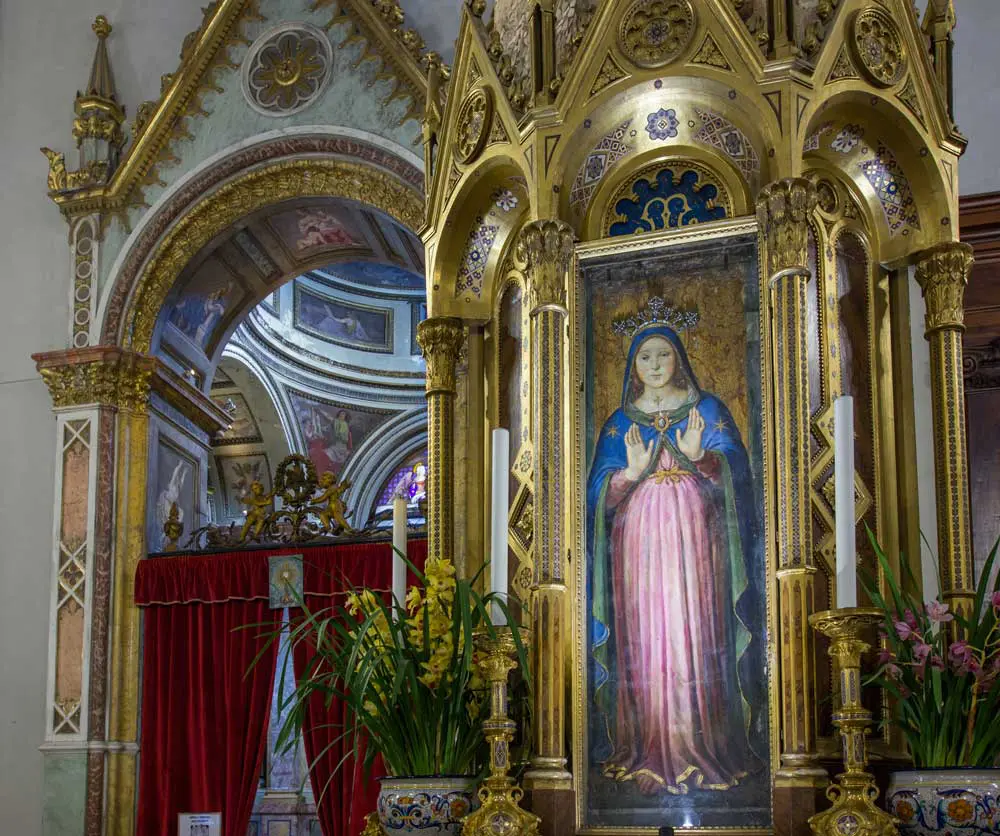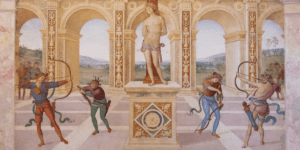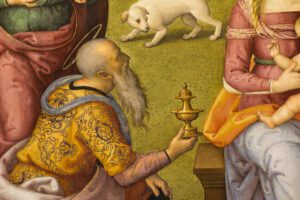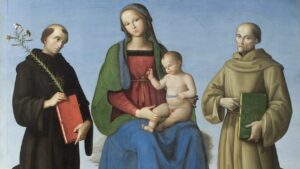Perugino´s “Our Lady of Graces” in Saint Lawrence´s Cathedral
Our Lady of Graces in Saint Lawrence´s Cathedral, Perugia, belongs to Perugino´s wall paintings. It can be seen on the third pillar on the right, on entering the church. The sacred picture is protected by a glass panel and a neo-Gothic tabernacle frame in wood that was added in 1855. The date written below, 1565, refers to the restoration of this piece of art, which was sponsored by Cardinal Fulvio Della Corgna.
Structure
Virgin Mary is shown as the praying Madonna. She stands upright, but at the same time, her posture is dynamic: a foot sticking out from under her long dress makes us understand that she walks. This kind of imagery is very old, we can see it already used in the catacombs. Another important detail is provided by her hands, opened at the same level as her chest, palms turned toward the observer. Her figure stands frontally before the side gate, so as to convey a message of welcome to all those who enter the cathedral. Mary besides is pregnant, as indicated by the ribbon tied around her rosy dress just above the belly. A blue cloak, lined in green and hemmed with gold, covers her head, then falls down to her feet; a brooch secures it on her bosom.
Mary wears a small cross at her neck; while on her halo, painted in gold, some low-relief elements have been applied that make a precious crown. Her face with smooth, delicate features expresses a sense of sweetness, while her eyes look directly into our eyes, so the sacred figure establishes a personal relationship with the people who “meet” her. This is further strengthened by the fact that Mary is the only personage in the painting. The background simulates a red and gold brocade: a detail that makes the scene suspended beyond time and space – unlike the country landscapes, echoing Nature in Umbria, and the Renaissance anthropic signs that you will so often notice in Perugino´s works.

Authorship. Copies in Umbria
Our Lady of Graces in Saint Lawrence´s Cathedral was ascribed to Perugino´s pupils in past times; mostly to Gian Nicola di Paolo. Currently, however, it is widely recognized as a work by Perugino himself.
Again in Perugia, in Saint Augustine´s Church, a copy of this painting exists that should probably be ascribed to Gian Nicola di Paolo. In the Church of Santa Maria Nuova (“Saint Mary´s, the new one”), a simplified version of the praying Madonna can be seen; it recalls the one in the cathedral in many details, anyway; that shows the great success this icon enjoyed throughout Perugia´s territory.









